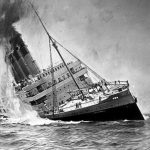 1915 – During World War I, the German submarine U-20 sinks the RMS Lusitanian, killing 1,200 people, including 128 Americans. The dive turned into public opinion in many countries against Germany, and contributed widely, to the American entry into the First World War. She became an iconic symbol in military recruitment campaigns throughout the United States.
1915 – During World War I, the German submarine U-20 sinks the RMS Lusitanian, killing 1,200 people, including 128 Americans. The dive turned into public opinion in many countries against Germany, and contributed widely, to the American entry into the First World War. She became an iconic symbol in military recruitment campaigns throughout the United States.
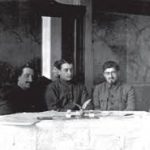 1920 – The Treaty of Moscow is officially signed, in which Soviet Russia recognizes the independence of the Democratic Republic of Georgia. The signing of this treaty gave de jure recognition of Georgia’s independence in exchange for the promise not to grant asylum on Georgian soil to troops of hostile powers against Bolshevik Russia. Georgia itself would be invaded by the Red Army six months later.
1920 – The Treaty of Moscow is officially signed, in which Soviet Russia recognizes the independence of the Democratic Republic of Georgia. The signing of this treaty gave de jure recognition of Georgia’s independence in exchange for the promise not to grant asylum on Georgian soil to troops of hostile powers against Bolshevik Russia. Georgia itself would be invaded by the Red Army six months later.
 1939 – Born in Montreal, Sidney Altman. Altman is a Canadian-American molecular biologist who has made significant contributions to the field of Molecular, Cellular Biology, and the Development of Biology and Chemistry at Yale University. In 1989 he shared the Nobel Prize in Chemistry with Thomas R. Cech for their joint work, on the catalytic properties of RNA, or as it is otherwise known, Ribonucleic Acid…
1939 – Born in Montreal, Sidney Altman. Altman is a Canadian-American molecular biologist who has made significant contributions to the field of Molecular, Cellular Biology, and the Development of Biology and Chemistry at Yale University. In 1989 he shared the Nobel Prize in Chemistry with Thomas R. Cech for their joint work, on the catalytic properties of RNA, or as it is otherwise known, Ribonucleic Acid…
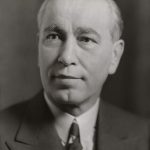 1943 – Fethi Okyar, 63, dies in Istanbul. Okyar was a Turkish diplomat and politician, who also served as a military officer and diplomat during the last decade of the Ottoman Empire. He was also the second Prime Minister of Turkey (1924-1925) and the second Speaker of the Turkish Parliament after Mustafa Kemal Ataturk. He and Ataturk would play an important role in modernizing Turkey.
1943 – Fethi Okyar, 63, dies in Istanbul. Okyar was a Turkish diplomat and politician, who also served as a military officer and diplomat during the last decade of the Ottoman Empire. He was also the second Prime Minister of Turkey (1924-1925) and the second Speaker of the Turkish Parliament after Mustafa Kemal Ataturk. He and Ataturk would play an important role in modernizing Turkey.
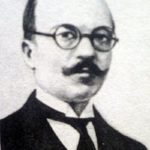 1947 – Death of Jani Minga, Albanian teacher, signer of the Declaration of Independence of Albania as a representative of Vlora. Jani Minga attended all educational congresses. He was the initiator for the creation of the patriotic club “Laberia” in 1889 and the opening of the first Albanian school in Kanina in 1909, while he also drafted the textbooks: “Albanian national preparatory primer”, “Albanian singing primer”, “Grammar of the Albanian language” , etc. In July 1911 he participated in the Assembly of Drashovica, in support of the Memorandum of Gërçë. Whereas, in 1912 he won the right to teach the subject of history and geography, after a competition in Ioannina, which he won. In 1912 Minga participated in the National Assembly that declared independence by writing J. Minga. At that time, with the opening of the Vlora school, he was appointed its director. In 1922 he participated in the teachers’ congress in Tirana. He was with Noli during the uprising of June 1924 and kept his word when the insurgent troops entered Tirana. Years later he devoted himself to education, as a teacher and inspector and from time to time organized activities with a patriotic spirit, such as. the commemoration of the Battle of Mashkore and the figure of Çerçiz Topulli, etc.
1947 – Death of Jani Minga, Albanian teacher, signer of the Declaration of Independence of Albania as a representative of Vlora. Jani Minga attended all educational congresses. He was the initiator for the creation of the patriotic club “Laberia” in 1889 and the opening of the first Albanian school in Kanina in 1909, while he also drafted the textbooks: “Albanian national preparatory primer”, “Albanian singing primer”, “Grammar of the Albanian language” , etc. In July 1911 he participated in the Assembly of Drashovica, in support of the Memorandum of Gërçë. Whereas, in 1912 he won the right to teach the subject of history and geography, after a competition in Ioannina, which he won. In 1912 Minga participated in the National Assembly that declared independence by writing J. Minga. At that time, with the opening of the Vlora school, he was appointed its director. In 1922 he participated in the teachers’ congress in Tirana. He was with Noli during the uprising of June 1924 and kept his word when the insurgent troops entered Tirana. Years later he devoted himself to education, as a teacher and inspector and from time to time organized activities with a patriotic spirit, such as. the commemoration of the Battle of Mashkore and the figure of Çerçiz Topulli, etc.
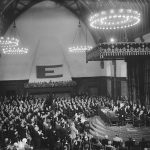 1948 – The Council of Europe is established during the Hague Congress. Congress also discussed the structure and future role of the Council of Europe. Teitgen and Maxwell-Fyfe assisted in the creation of the Convention for the Protection of Human Rights and Fundamental Freedoms in the Council of Europe. This congress gave the right contribution and means to increase public opinion on European unity.
1948 – The Council of Europe is established during the Hague Congress. Congress also discussed the structure and future role of the Council of Europe. Teitgen and Maxwell-Fyfe assisted in the creation of the Convention for the Protection of Human Rights and Fundamental Freedoms in the Council of Europe. This congress gave the right contribution and means to increase public opinion on European unity.
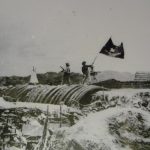 1954 – Battle of Dien Bien Phu ends with the defeat of the French army and a decisive victory for the Viet Minh guerrillas. France agreed to withdraw its forces from all colonies in Indochina, France and determined that Vietnam would be temporarily divided in the 17th parallel. The control of the north was given to the Democratic Republic, while the south would be held by pro-Western forces.
1954 – Battle of Dien Bien Phu ends with the defeat of the French army and a decisive victory for the Viet Minh guerrillas. France agreed to withdraw its forces from all colonies in Indochina, France and determined that Vietnam would be temporarily divided in the 17th parallel. The control of the north was given to the Democratic Republic, while the south would be held by pro-Western forces.
 1986 – Canadian Patrick Morrow becomes the first person to climb Mount Seven Summits. The Seven Summits are the highest mountains on each of the seven continents. They include McKinley in North America, Aconcagua, in South America, Elbrus, in Europe, Kilimanjaro, in Africa, Everest, in Asia, Kosciuszko, in Oceania, and Vinson, in Antarctica. Morrow is considered one of the most famous climbers in the world.
1986 – Canadian Patrick Morrow becomes the first person to climb Mount Seven Summits. The Seven Summits are the highest mountains on each of the seven continents. They include McKinley in North America, Aconcagua, in South America, Elbrus, in Europe, Kilimanjaro, in Africa, Everest, in Asia, Kosciuszko, in Oceania, and Vinson, in Antarctica. Morrow is considered one of the most famous climbers in the world.
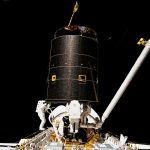 1992 – The Space Shuttle Endeavor is launched into its first mission, the STS-49. The main purpose of his nine-day mission was to pull an Intelsat VI satellite (Intelsat 603, which failed to leave the Earth’s lower orbit two years ago), attach it to a new upper phase, and restore it to orbit. its target geosyncline.
1992 – The Space Shuttle Endeavor is launched into its first mission, the STS-49. The main purpose of his nine-day mission was to pull an Intelsat VI satellite (Intelsat 603, which failed to leave the Earth’s lower orbit two years ago), attach it to a new upper phase, and restore it to orbit. its target geosyncline.






